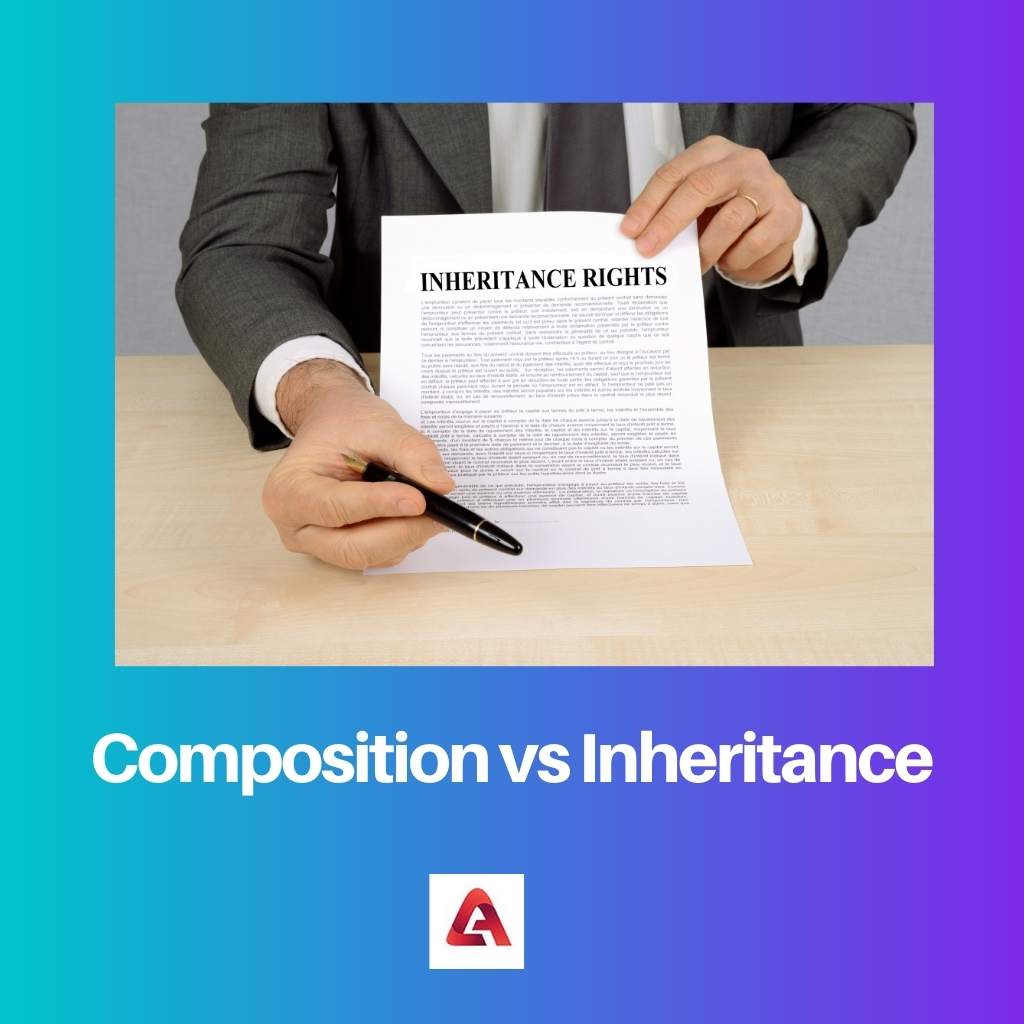The use of previous versions to create new software using the concepts of reusability is referred to as reusable code in programming.
Key Takeaways
- Composition is building complex objects by combining simpler objects, while inheritance creates new classes from existing ones.
- Composition allows for greater flexibility in modifying objects, while inheritance provides a more rigid and hierarchical structure.
- Composition is preferred over inheritance because it promotes code reuse, reduces coupling, and allows for greater abstraction.
Composition vs Inheritance
Composition involves building complex objects from simpler ones, resulting in a “has-a” relationship between classes. Inheritance allows one class to inherit properties and methods from another, establishing an “is-a” relationship and promoting code reusability.

Since it’s simple to construct complicated classes utilizing previously published, well-designed classes as components, one can always use an object as a field within another class.
In OOP, inheritance refers to the process by which one entity acquires the characteristics of another. It’s among the most effective ways to enforce code reuse in OOP.
Comparison Table
| Parameters of Comparison | Composition | Inheritance |
|---|---|---|
| Significance | We just declare a type that we want to utilize in composition, and it can store several implementations that can vary at runtime. | We define the class that we are adopting (superclass) in inheritance, and it cannot be altered at execution. |
| Class Combining | The ability to combine functionality from distinct classes is provided through composition. | We can only extend one class in this case; in other words, many classes cannot be extended because Java does not enable multiple inheritances. |
| Functionality | Composition allows us to test the functionality of the classes we’re using without having to worry about whether they’re parent or child classes. | Inheritance necessitates the use of a parent class in order to test a child class. |
| Code Reutilization | Even code from final classes can be reused thanks to composition. | The final class cannot be extended through inheritance. |
| Relationship | It is a “has-a” situation. | It’s an “is-a” situation. |
What is Composition?
A composition is a form of aggregation in which ownership is implied. There is a dependence because one object is dependent on another. Consider the following objects: a school object and a classroom object.
If somehow the characteristics of one object must be incorporated into the features of another, the relationship necessitates composition.
Composition is described as the use of an object inside another object. An entity could be used as a field in any class regularly. In composition, they use an entity that is part of a class.

What is Inheritance?
Inheritance is when a new class uses the attributes and methods of an existing class. This pre-existing class is referred to as the parent class, superclass, or foundation class.
If we want to build a fresh class, but there seems to be one with some of the code we need, we may extract our new class from the current one.

Main Differences Between Composition and Inheritance
- Even code from final classes can be reused thanks to composition, whereas the final class cannot be extended through inheritance.
- Composition is a “has-a” situation, whereas Inheritance is an “is-a” situation.
- https://dl.acm.org/doi/abs/10.1145/2161996.2162002
- https://www.sciencedirect.com/science/article/pii/S0890540112000399

I appreciate this article, as it is very informative and provides detailed information about composition and inheritance.
I do agree, the comparison table is particularly useful in highlighting the differences between composition and inheritance.
The distinction between ‘has-a’ and ‘is-a’ relationships provides a comprehensive understanding of composition and inheritance in object-oriented programming.
Absolutely, the ‘has-a’ and ‘is-a’ relationships truly define how composition and inheritance form connections between classes.
The article effectively presents the main differences between composition and inheritance, delivering clarity on the distinct attributes of each approach.
Indeed, understanding the parameters of comparison between composition and inheritance is crucial for informed decision-making in software development.
The article effectively explains the significance and functionality of composition and inheritance in programming.
Yes, it is fascinating to understand how inheritance promotes code reusability in OOP.
The article’s detailed elaboration on composition and inheritance serves as a valuable resource for grasping the fundamental concepts of code reusability.
I agree, the article’s focus on the significance and relationship aspects of composition and inheritance is commendable.
The concept of composition and its role in code reusability is well-addressed, providing a clear understanding of its significance in software development.
Exactly, the article effectively distinguishes how composition and inheritance offer distinct avenues for code reuse.
The practical insights into the functionality of composition and inheritance are truly enlightening.
The comparison table effectively demonstrates the differences in composition and inheritance, helping to weigh their respective benefits in programming scenarios.
The article’s approach to explaining code reutilization in both composition and inheritance is commendable.
Agreed, the real-world applications of each method are clearly defined, making it easier to understand their practical implications.
This article provides a comprehensive view of how composition allows for flexibility and code reuse, while inheritance establishes rigid hierarchies.
Indeed, understanding the key takeaways helps in making informed decisions when choosing between composition and inheritance.
The article’s detailed explanations and references aid in comprehending the complex concepts of composition and inheritance in programming.
The references provided in the article are valuable for further exploring the topic of code reusability.
I find the use of real-world examples to illustrate composition and inheritance to be especially useful.
The distinction between composition and inheritance is well articulated, making it easier to comprehend their differences and applications.
Absolutely, the practical examples given in the article enhance the understanding of key concepts.
I appreciate the clarity in defining the relationships formed through composition and inheritance.